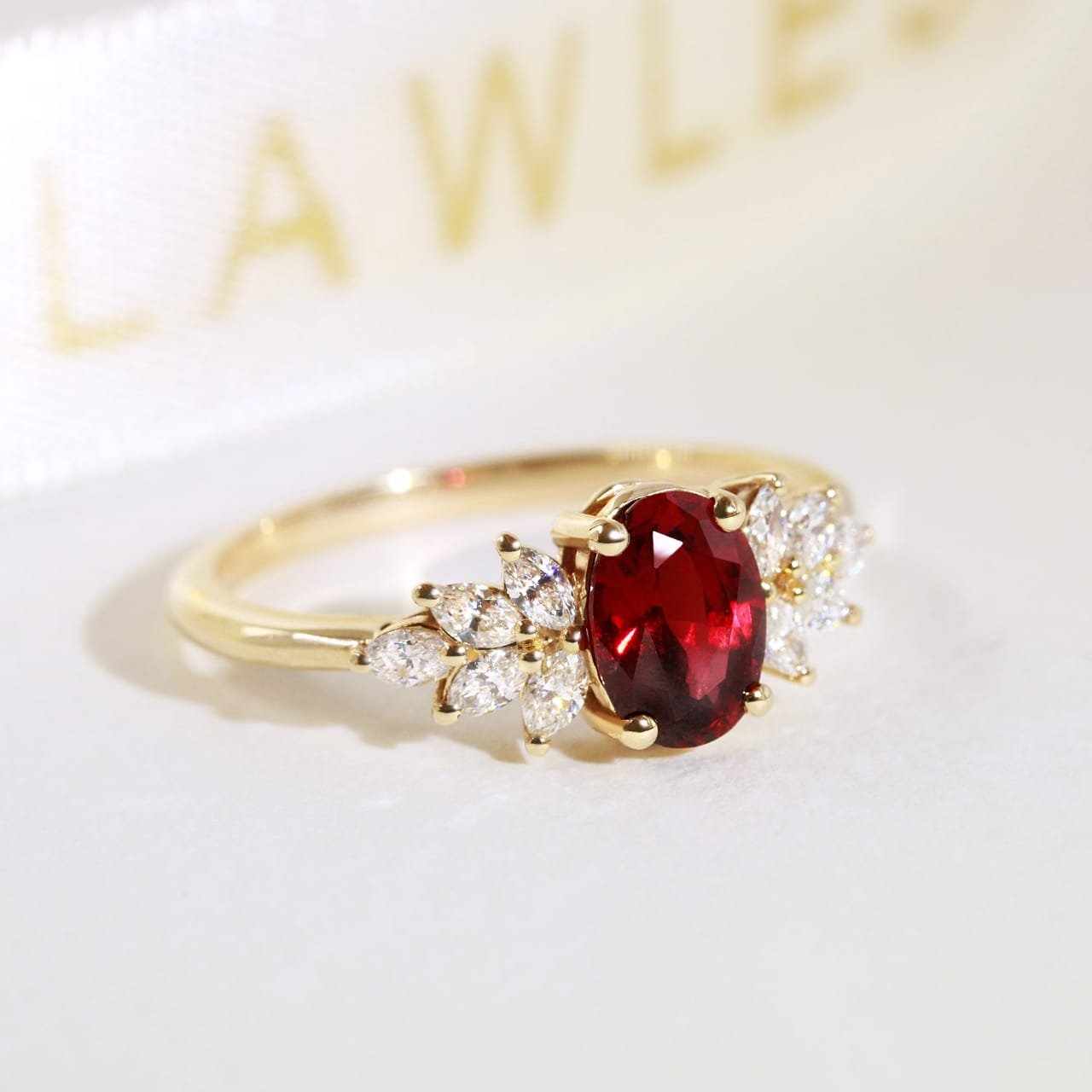The history of ruby gemstone can be dated back to centuries as well as different cultures of the world. Located on the Chandler Mine in Zambia, the crimson gemstone has been admired and sought after by the ancient civilizations and modern kings and queens as well as collectors for their excitement of beauty and significance of rarity. It is a rare gemstone that everybody knows, also known as the “King of Gemstones” has put a unique stamp on human civilization. So as we promised in this article, I will be taking you through ruby gemstone history and how it has come to be part of jewelry worn up to this century.
Ancient Beginnings: The Early History of the Ruby
Rubies are among the oldest gemstones in the world; many authorities say that their discovery and use began in Southeast Asia thousands of years ago. The first known report of ruby was found in Mogok Valley of Myanmar in which the best rubies are still being mined today for over two millennia. They love to wear Burmese rubies that are considered to be some of the richest red ones mixed with a little blue at the(‘.
They were also greatly used in Indian culture where they were referred to as ‘ratnaraj’ which means ‘king of all gems.’ The ancient Sanskrit texts depicted rubies as being symbolic of the sun and provided its bearer with the powers of wealth, protection and health. As it has been mentioned the history of ruby gemstones in India is replete with stories and legends about kings and queens wearing their ruby gemstones as a sign of royalty.
The Role of Rubies in Royalty and Aristocracy
Rubies have always been linked with the monarchy, especially from European monarchial history. Today there are many crowns, tiaras and regalia that are studded with this stone and one of them is the British Imperial State Crown. In fact, one can recall the Black Prince’s Ruby that is known to be one of the oldest and famous rubies in the world as it’s placed in the British Crown. Although this gemstone belongs to the spinel group it was thought to be a ruby for a long time mainly because of its fiery red hue and has been involved in British ruby gemstone history.
The Middle Ages was marked with the great demand for rubies among the Europeans, especially the upper class. Thus, rubies on one hand reflected people’s financial status while on the other hand, these gems were believed to have curative properties. Others deemed that rubies had an ability to shield the wearer from diseases, to give the one wearing them free from nightmares, and for treatment of bleeding. During this period, the history of ruby gemstones also developed as Europeans began to explore Asia in search of the best gems.
Modern History: The Ruby Evolution in the 20th Century
With the new dawn of the 20th century in the mineral industry the ruby gemstone history got a fresh turn with the introduction of both gemstone treatments and synthesis ruby. During the early 1900 there were technological advancements in how different materials could be synthetically made to resemble the real deal ruby materials. Originally, these synthetic rubies were used in industries as watches or lasers but they were also preferred, economical substitutes for natural rubies in jewelry.
However, over the years there have been synthetic rubies but still natural rubies are much sought after. The ruby gemstone history of the twentieth century also noted a trend in gemstone enhancement especially through heat treatments to bring out the natural color and clarity of natural rubies. These treated rubies are considered precious but are usually cheaper than the natural rubies which are rather scarce and highly priced.
The Lasting Legacy of Ruby Gemstone History
The history of ruby gemstone is an interesting story that speaks of the stone’s popularity and importance during past eras. Rubies have been the object of fascination in history, starting with the warriors and kings and queens in the ancient world and includes the present day jewelry lovers. This together with the deep red hue, rarity, and symbolism that’s associated with rubies, make it very probable that they will always stay popular throughout generations.
When it comes to buying a ruby for glamor or other purposes of having a symbolic item or even having it as an investment, having a clue of ruby gemstone history makes owning a ruby much more meaningful. Every stone itself has a history; it being a product of the past makes it timeless and perfect for every woman or anyone’s jewelry box.
Final Thoughts
As much as the ruby gemstones, the history of ruby gemstones is equally interesting. This cross-sectional look at history tells of its timeless application, appreciation, and use, even to the present day, as a jewel. In whatever capacity people chose to consume it, ruby has continued to be a precious gemstone with richness. With this ruby gemstone background you can easily get a hindsight of this beautiful and valuable stone.









